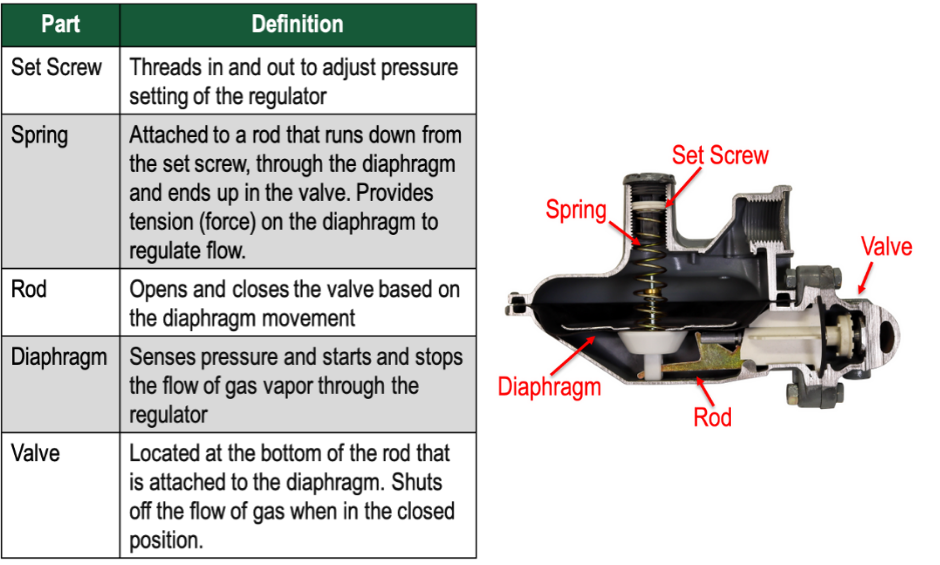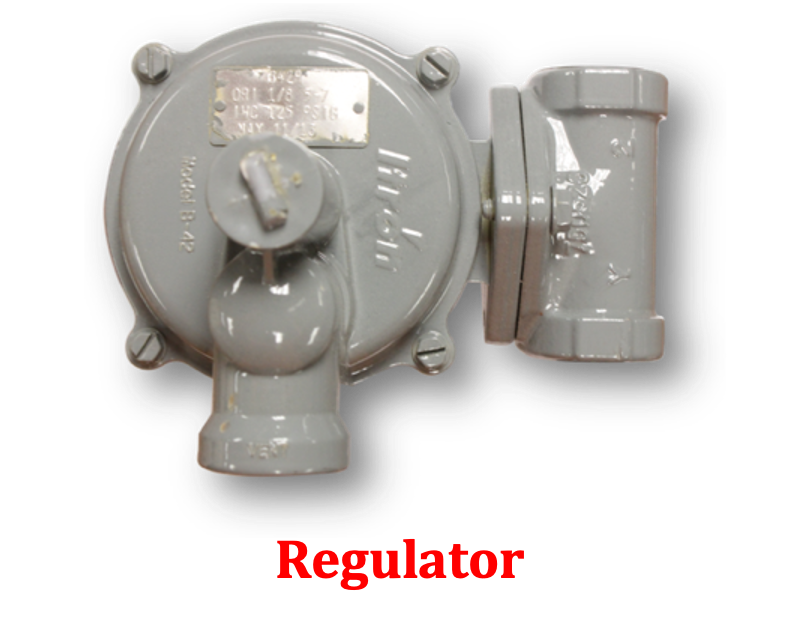Natural Gas Meter Set Regulators

Natural Gas Meter Set Regulators
From the well to the processing plant and the compressor station to the house; the act of getting natural gas from its starting point all the way to the consumer is a long and precise process. A large part of this journey includes the safe transference of high pressure gas through pipelines that must be lowered before they reach their destination in order to fit the appliance need for each home or building. The transition to usage means typically reducing as much as 60 PSI all the way to one quarter PSI that gas appliances operate at.
The regulator is an important component that is responsible for lowering the gas pressure at the natural gas meter set from pounds all the way down to inches of water column. This component ensures the proper amount of pressure gets to the meter which feeds natural gas to the home or building. See below for a breakdown of the parts that make up the natural gas meter set regulator:

How does the natural gas meter set regulator work? When gas is flowing, the diaphragm will move the spring up and down to regulate the pressure. When the downstream pressure after the regulator is at the set point, the diaphragm will push back on the spring to close the valve. When the valve becomes seated against the orifice, the flow of gas will be shut off in lock up until the downstream pressure is reduced by customer use.
Safety. Convenience. Consistency. Natural gas meter sets include many parts that work together to safely deliver and measure natural gas to a structure, one of which includes the regulator. To learn more about what regulators bring to the application, take the ‘Natural Gas Meter Sets Regulators’ AYU course, call A.Y. McDonald at 1-800-292-2737, or fill out a contact us form on our website.

